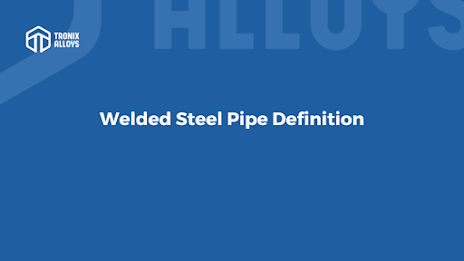What’s the Difference Between Steel Pipe and Steel Tube
A hollow
section of steel with a round cross-section has been manufactured in the United
States since the early 1800s. It is made for the transportation of a wide
variety of products, including fluids, gas, pellets, powders, and more. There
are many uses for steel pipes, including underground transportation of water
and gas, construction to protect electrical wires, and even the transport of
liquids and gases. Steel pipes are not only strong, but they also can be
lightweight. In addition to this, they are also used for making parts for
automobiles, refrigeration units, heating and plumbing systems, flagpoles, and
street lamps, just to name a few. This makes them ideal for bicycle frames and
other products.
The most important dimension for a pipe is the outer diameter (OD) along with the wall thickness (WT). By subtracting the outer diameter from the wall thickness (WT), the inside diameter (ID) of a pipe is determined, and the amount of liquid it can hold. When we talk about pipe in our industry, we often refer to the pipe as a schedule (ID), such as 2 inches schedule 40 or 14 inches extra heavy. This is what the industry refers to as a pipe. For instance, we can use the walls or schedules below, including the standard (STD), and the XS/XH. The majority of pipe is sold in lengths of
21 or 42 feet, depending on the manufacturer.
What is Tube?
In engineering, a tube refers to hollow sections that are shaped like rounds, squares, rectangles, or ovals. The tubes are used for pressure equipment, mechanical applications, and instrumentation applications.
There are several raw materials used to make steel tubing, including iron, carbon, manganese, vanadium, and zirconium. Seamless tubing can also be welded, while welded tubing is a solid block of steel that is rolled into a round shape and pierced and stretched to its final length. The same thing is done to play dough when you roll it into a cylinder. If you have extra dough, push your finger through the middle and stretch it out to make it longer. It is produced in the same way, but the raw
materials are hot and spinning, and everything is completely machine operated. A welded steel tubing, on the other hand, is made from coils of steel that are welded together. Initially, the coil is slit and rolled up into a round shape, then welded together at the ends. As a result, the tubing can either be simply cut to a certain length and used as round tubes, or it can be altered into
other shapes such as square, rectangular, oval, etc. based on the location of the tubing.
It is common for buyers in our industry to refer to the item they are considering as an (OD) and a (WT) in inches or millimeters. The outer diameter (OD) and the wall thickness (WT) of the tube are indicated in inches or millimeters. Tubes can be purchased in a variety of wall thicknesses, such as 11 gauge, 1/4″, 3/8″, or 5/8″. They are available in lengths of 20, 24, 40, and 48 feet, but they can also be manufactured in custom lengths.
For more information visit
https://tronixalloys.com/whats-the-difference-between-steel-pipe-and-steel-tube/
#differencebetween #steel #pipe #steeltube #steelexporter #thesteelexporter #supplier




Comments
Post a Comment